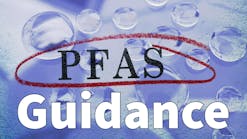A new water year as come for California, marking new concerns about a fourth year of extreme drought for the state.
California’s water year runs from October 1 to September 30 and is the official 12-month timeframe used by water managers to compile and compare hydrologic records.
Water Year 2022 ended on Friday and featured continued extreme drought with historically dry months and a record-shattering heatwave. Now, state officials are focusing on the months ahead as they prepare for a fourth dry year.
Over the past 12 months, California saw extreme swings between record-breaking storms and dry conditions. In October 2021, parts of Northern California experienced the highest single-day rain totals ever, followed by a dry November and then a record snowfall in parts of the Sierra in December. Conditions took a turn again with the driest January, February, and March in over 100 years.
Despite some rain recorded in parts of California in September, uncertainty remains about what the new water year may bring. Long-range forecasting suggests that warmer and drier than average conditions will persist.
“This is our new climate reality, and we must adapt. As California transitions to a hotter, drier future, our extreme swings from wet and dry conditions will continue,” says DWR Director Karla Nemeth. “We are preparing now for continued extreme drought and working with our federal, state, local, and academic partners to plan for a future where we see less overall precipitation and more rain than snow.”
Water Year 2022 ended with statewide precipitation at 76 percent of average. Statewide reservoir storage is 69 percent of average for this time of year. Lake Oroville, the State Water Project’s largest reservoir, sits at 64 percent of average for this time of year.
The current drought from 2020 to 2022 is now the driest three-year period on record, breaking the old record set by the previous drought from 2013 to 2015.
The state is continuing to provide financial and technical support for water resilience projects across California. To date, DWR has provided over $480 million in grant funding through its Small Community and Urban and Multi-benefit Drought Relief programs. This summer, the Legislature approved hundreds of millions in additional funding and programs to support these communities.
Californians can access current water conditions in real time at California Water Watch, a new website launched by DWR. This website will help Californians see their local hydrological conditions, forecasts, and water conditions down to their address or their local watershed. The site presents data from a variety of sources and allows the public to obtain a quick snapshot of local and statewide water conditions. Complete data for Water Year 2022 is available now.



